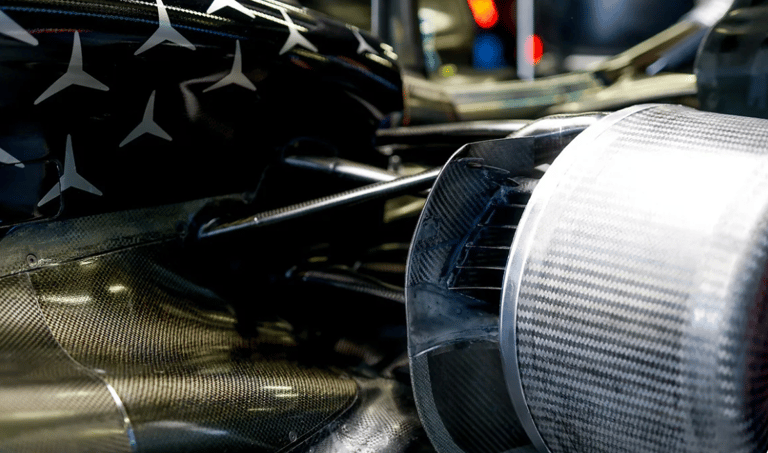An Introduction of Carbon Fiber Reinforced Bio-Based Polymer Composite Material in the Mercedes W16 Formula 1 Race Car: A Stronger and Sustainable Solution
By Mufaddal Shakir
10/30/20252 min read
An Introduction of Carbon Fiber Reinforced Bio-Based Polymer Composite Material in the Mercedes W16 Formula 1 Race Car: A Stronger and Sustainable Solution
In early 2025, the Mercedes AMG-Petronas F1 Team was working to qualify and introduce sustainable carbon fiber-reinforced composite material into its W16 race car. Following this, the Azerbaijan Grand Prix in September 2025 saw the introduction of bio-based carbon fiber-reinforced composite material in the wheel shield of the rear brake duct on the race car. The composite was developed by using a novel resin, sourced from Syensqo, which includes 30% bio-based materials.
The team has used this kind of material for the first time on a technically performant part in race conditions. By using bio-based carbon fiber composite on the rear brake duct wheel shield, it has been demonstrated that the material can withstand the extreme conditions of F1 racing, and the future could see the widespread adoption of this material across the sport.
The Role of Rear Brake Duct Wheel Shields
These wheel shields are generally covers or aerodynamic structures that are placed around the inner face of the rear wheel and inside the brake duct assembly. The main purpose of these shields is to maintain the brake temperature by managing how much air must be retained or expelled. They prevent both overheating, which may harm the components, and overcooling, which might reduce the braking efficiency.


Part of rear wheel brake duct wheel shield (Source: Mercedes AMG Petronas)
About the Bio-Based Composite Material
The wheel shields were made up of carbon fiber-reinforced bio-based polymer composite material. A new kind of Syensqo's bio-based resin (MTM 49-3 epoxy) was used here, which includes 30% bio-sourced monomers. This novel epoxy resin was introduced by Syensqo for utilization in the structural automotive applications, and it provides the same mechanical performance in comparison to its fossil-based counterpart. The resin was developed in order to help the OEMs in reducing carbon footprint and achieving sustainability goals.
Alice Ashpitel, Head of Sustainability, said that "This project with Syensqo highlights our commitment to reduce our environmental impact while maintaining the highest standards of performance. By integrating bio-based resin within a carbon fibre composite material, we are setting a new benchmark for the future of motorsport and beyond."
